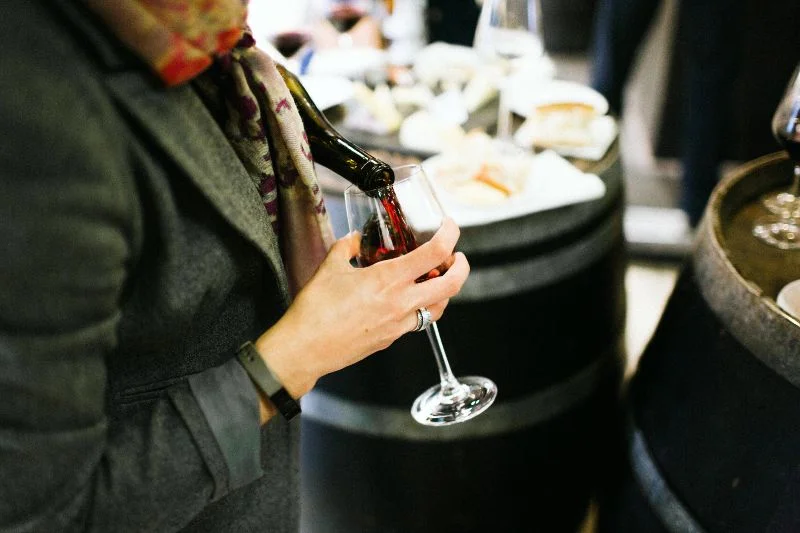Your Primeur Primer: Gaillac Primeur and other nouveau wines
First published November 14, 2018. Updated November 18, 2019.
It’s the third week in November, which means cavistes and restaurants all over France are preparing to party. Why? To celebrate the release of this year’s crop of “primeur” (first) wines – the most famous of which is Beaujolais Nouveau.
Here in Toulouse, we have our own regional version of Beaujolais Nouveau, called Gaillac Primeur. Not sure what all the fuss is about? Pour yourself a drink and sit back, because I’ve got a primer on primeur wines just for you (sorry, I couldn’t resist).
The history of primeur wines
The Gaillac AOC, near Toulouse, is one of approximately 16 AOCs and 68 IPGs that are allowed to sell a portion of their wines in the same year that they were harvested (i.e. the grapes that are harvested in the fall of 2018 become wine that is sold before the end of 2018). These wines are called “primeur” or “nouveau” wines, which highlight their status as the first wines from a particular harvest season (this not to be confused with selling wine “en primeur,” which is selling wine as futures, a common practice in Bordeaux). These first/new wines were historically made to drink soon after harvest as part of the harvest celebrations. Beaujolais Nouveau started to become popular in the 1950s when the Union Interprofessionnelle des Vins du Beaujolais (UIVB) saw the potential benefits of turning the release of Beaujolais Nouveau into a grand event: the wine region gets an increase in marketing attention around a specific release date (originally November 15th, but then set as the third Thursday of November in 1985) and winemakers get a nice kick-start to the post-harvest cashflow while they wait for the regular wine to continue ageing. What began as a local celebration caught on in Paris and they began staging races to bring the wine to waiting restaurants and wine merchants who staged midnight parties. The Nouveau craze really erupted in the ’70s and ’80s, with Beaujolais Nouveau being shipped and fêted around the world (just after 12:01 AM on the third Thursday of November, naturally), and other French wine regions – including the Loire and the Rhone valleys – followed suit to add the primeur category to their AOC.

Making primeur wines
Beaujolais is at the heart of the primeur wine tradition because the Gamay grape – the hallmark of Beaujolais – is particularly good for making this type of wine due to its low tannins, light body, and fruitiness – all of which are emphasized by the special process of carbonic maceration used to ferment the grapes before pressing. Carbonic maceration requires whole clusters of fruit to be put in the vat together, so grapes for primeur wines are always hand-picked. Then, the vat is pumped full of carbon dioxide, which jump-starts fermentation within each individual grape (as opposed to normal fermentation which happens after the grapes have been crushed and the juice is released). One of the most notable characteristics that can sometimes (but not always) be found in primeur wine is a unique banana aroma, which some say is the result of certain yeasts used, the carbonic maceration process, or even the Gamay grape itself.
However, depending on the region, primeur wines don’t always have to be made with Gamay and they don’t always have to be red wines. You can find red, white, and rosé varieties. The only thing you won’t find in this category is sparkling wine.
It’s also worth noting that you’ll find wines that are made with carbonic maceration outside of the primeur/nouveau category. Just last week, I had the pleasure of tasting a red wine made from 100% Braucol by the notable Gaillac producer Domaine Plageoles that was made with two different parcels of grapes, one of which had undergone carbonic maceration before being blended with the other. I was amazed by the contrast between fruit and depth – it was like drinking a chocolate-covered black raspberry!
Gaillac Primeur
Gaillac Primeur, which began production in the early 1970s, is made in the same fashion as Beaujolais Nouveau, even requiring the use of the Gamay grape, and released at the same time as all of the other primeur/nouveau wines – at 12:01 AM on the third Thursday of November. Many bars and restaurants in Toulouse have special events, dinners, and tastings planned to celebrate the release. The winemakers of Gaillac use the occasion to hold a whole weekend of events and open houses at many domaines in the area. Today, Gaillac produces around 700,000 bottles of primeur wine from about 40 producers, most of which is red, though a little white primeur wine is produced as well. This represents only a small portion of the overall production in Gaillac, which averages over 20 million bottles per year. By contrast, Beaujolais sells over 25.7 million bottles of their nouveau wine (over 1 million bottles in Paris alone!), which makes up about a third of total production for the AOC.

IGP Vins Nouveau
To further confuse things, as I mentioned at the start of the article, there is also a category of primeur wines that are allowed to be made by regional IGPs (which are less location-specific and have less strict rules than AOCs). These “IGP vins nouveau” are released the third Thursday of October (and to much less fanfare then their AOC cousins a month later). The two big differences between IGP and AOC regulations are that IGP nouveau wines are allowed to be machine harvested and are permitted much higher yields per hectare/acre. This means that these IGP nouveau wines are usually much cheaper. However, it pays to ask a knowledgeable caviste because some producers choose to make their nouveau wine under the IGP label instead because it allows them more choice of grapes and room for experimentation than the more strict AOC regulations – so an IGP wine doesn’t always mean lesser quality.
When and where to drink primeur wines
Despite the continued hubbub each November, primeur wine sales have been on the decline, in part due to a bad reputation among wine drinkers. With its simple, fruity flavors, primeur wine has been criticized as not being a “serious” wine. However, I’m a firm believer that there is a situation for every wine – even the simple ones. And, as with all wines, the quality depends on the winemaker – so if you’re curious to try it, go to a caviste you trust instead of picking up a bottle at the supermarket. Many cavistes agree that there is a specific window for primeur wine sales before the buzz dies down and people turn to heavier winter reds. So they only buy what they think they can sell within the first two weeks after release. So if you’re curious to try it or want to stock up, best not wait long!
The very qualities that cause some serious wine drinkers to knock it actually make it quite a good choice if you’re looking to transition into red wine from white. It’s a fun wine to enjoy at a party with friends and (if you’re American) makes an excellent wine for upcoming Thanksgiving celebrations. I also find it a good match for a raclette party, where the acidity and light body are a good counterpoint to all of that melted cheese. It’s fine to drink all winter long, when you want something fresh and bright to combat the winter doldrums. Whenever and wherever else you like to drink it (or not), I hope you’ll seek out somewhere to celebrate on the third Thursday of November, as the communal revelry and pure fun of knowing that you’re celebrating with people all over France (and the world) keep it close to my heart and alive on my tastebuds.
Further Reading
Chai Mon Vigneron – check out the program of events and open houses at domaines around Gaillac this weekend (updated for 2019)
Les vins nouveaux premiers de cordée mais second rôle (Ladepeche.fr, 2018)
Le nouveau: Le Gaillac Primeur c’est ce soir à minuit (Ladepeche.fr, 2018)
Le Gaillac Primeur est déjà en bouteilles (Ladepeche.fr, 2018)
15 things you need to know about Beaujolais Nouveau (Thelocal.fr)
Mysteries of Beaujolais (The New York Times – Diner’s Journal) – a good explanation of carbonic maceration and how it differs from traditional winemaking in Beaujolais
Thanksgiving means nouveau wine – and not just from Beaujolais (The Washington Post)
Want to learn more about local wine in Toulouse? Check out the Marché Victor Hugo tour where we learn about (and taste!) wines from Gaillac and other regions surrounding Toulouse.
Photo credits: Bianca Isofache on Unsplash; Someecards; Giving Tree Photography



